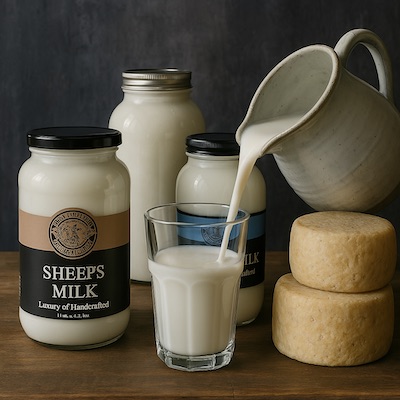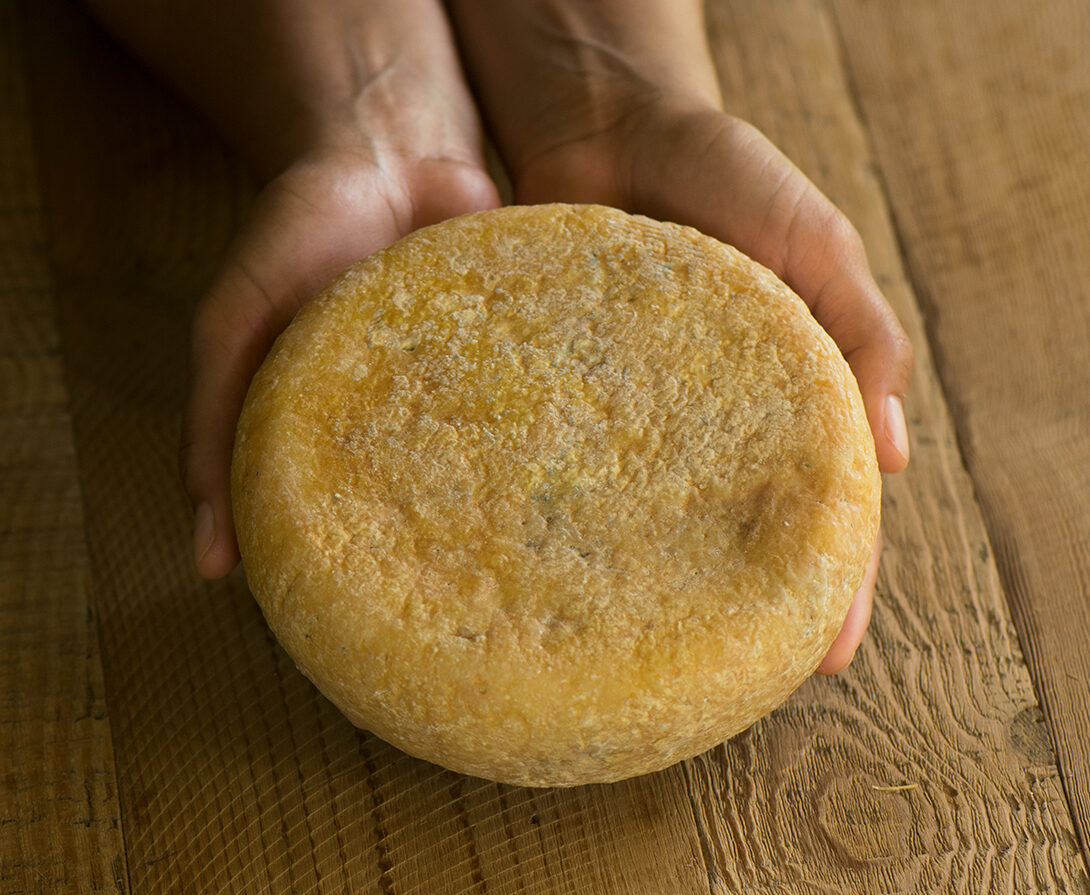Lucky Enough to Have a Whole Wheel of Cheese?
This message is for those fortunate enough to purchase a quarter or full wheel of our aged Pecorino or Caciotta cheese.
By the way, a few cheese wheels and quarters are still available—now at 50% off. Don’t miss this rare opportunity to stock up on probiotic-rich, lactose-free sheep cheese.
These cheeses are more than just food—they’re aged, kefir-fermented treasures, full of live cultures and natural enzymes. However, to preserve their quality, you must store them correctly. Luckily, it’s easy, as long as you follow a few simple rules.
Storing Aged Kefir Cheese at Home: Keep It Delicious, Keep It Safe
Aged Cheese That’s Easy to Keep—If You Know How
Pecorino and Caciotta are firm, aged sheep cheeses. Thanks to their low moisture and active fermentation, they store well, much better than soft cheeses. You can confidently refrigerate them for months.
To keep their texture, flavor, and probiotic benefits, follow these tips:
- Open the cheese from the packaging and let it sit outside for at least 2 hours to reveal the true cheese colors. Then cut the piece you want to enjoy now and prepare the rest to be wrapped again.
- Wrap them in wax paper or parchment first, then place them in a breathable container or beeswax wrap. This allows the cheese to breathe.
- Store in the cheese drawer or vegetable compartment of your fridge—ideally around 4–8°C.
- Avoid airtight containers. Cheese needs a little air to prevent moisture buildup and spoilage.
- Don’t pre-cut too much. Cut only what you plan to eat within a few days. The rest keeps better as a whole piece.
You can find the complete storage guide here, but we’ve simplified the essentials above for daily use.
Bonus tip: Our aged sheep cheeses are strong enough to handle shipping and travel. They can safely stay out of the fridge for up to 48 hours—ideal for delivery across Canada.
What Happens If You Store It Wrong?
Mistakes That Can Spoil Even the Best Cheese
Even though Pecorino and Caciotta are sturdy, mistakes in storage can lead to mold, texture changes, or spoilage. The main risks include
- Wrapping too tightly promotes sweat and slimy surfaces
- Leaving cheese exposed causes it to dry out or absorb odors.
- Storing it near fruit or strong-smelling items accelerates breakdown and off-flavors
- Letting it sit wet—a damp surface invites yeasts and bacteria.
These mistakes don’t just affect flavor—they can ruin the beautiful balance of fermentation and fat that defines our kefir-aged sheep cheese.
How to Tell If Your Aged Cheese Has Gone Bad
Even the best aged cheese can go wrong if stored improperly. Our kefir-aged Pecorino and Caciotta are resilient, but they still need care.
Here’s what to watch for:
1. Surface Mold – When It’s Okay and When It’s Not
- If you see tiny blue-green spots or white powdery fuzz on the rind or surface, don’t panic. These are harmless molds that sometimes develop on firm cheeses in home fridges. Many people actually enjoy the taste of the cheese that has this natural mold. It occurs because we do not use any other preservatives except salt. So this cheese is entirely safe to enjoy. If you are still worried about it, simply cut off about 1–2 cm (½ inch) around and below the moldy area — the rest is perfectly good to eat.
- However, black, pink, or orange molds, as well as anything with dense, fuzzy growth, can signal spoilage. If the mold spreads rapidly or smells odd, it’s safest to discard the cheese.
2. Smell – Trust Your Nose
- Healthy Pecorino will have a distinct, sheepy, nutty, and intense aroma. Caciotta should have a fresh, slightly sour aroma due to the presence of kefir cultures.
- If you detect a strong ammonia odor, mustiness, or something rancid or rotten, it’s a red flag. Ammonia is common in overripe soft cheeses, but not in firm, probiotic sheep cheese. If the scent makes you recoil, don’t eat it.
3. Texture and Surface Feel
- Some natural butterfat separation is normal. You might see tiny droplets (“sweat”) — just blot them.
- A sticky or slimy rind indicates bacterial or yeast spoilage, especially for semi-hard cheeses like Caciotta. If it feels tacky and leaves a residue, that’s not a good sign.
4. Color Changes
- Inside, Pecorino should be ivory to pale yellow in color. If the interior darkens, turns greyish, or has unusual streaks, it’s likely oxidized or harboring microbial growth.
- Caciotta, being more moist, is prone to developing pink or orange slime on its rind if improperly stored — that’s spoilage, not aging.
5. Taste – When in Doubt, Stop
- Pecorino naturally has a sharp, savory kick. Caciotta is smooth and tangy. But if it tastes bitter, metallic, overly sour, or unpleasant, it’s past its prime.
Don’t second-guess if it tastes wrong — better safe than sick.
Still Unsure? We’re Always Here to Help
Storing your cheese correctly means preserving flavor, nutrients, and the beautiful fermentation that makes our lactose-free, probiotic-rich sheep milk cheese so special. Whether you’re aging a whole wheel of Pecorino or savoring a wedge of Caciotta, you now know what to do.
And remember—if you have any questions, please don’t hesitate to reach out.
Email us or call anytime. We love talking cheese.




